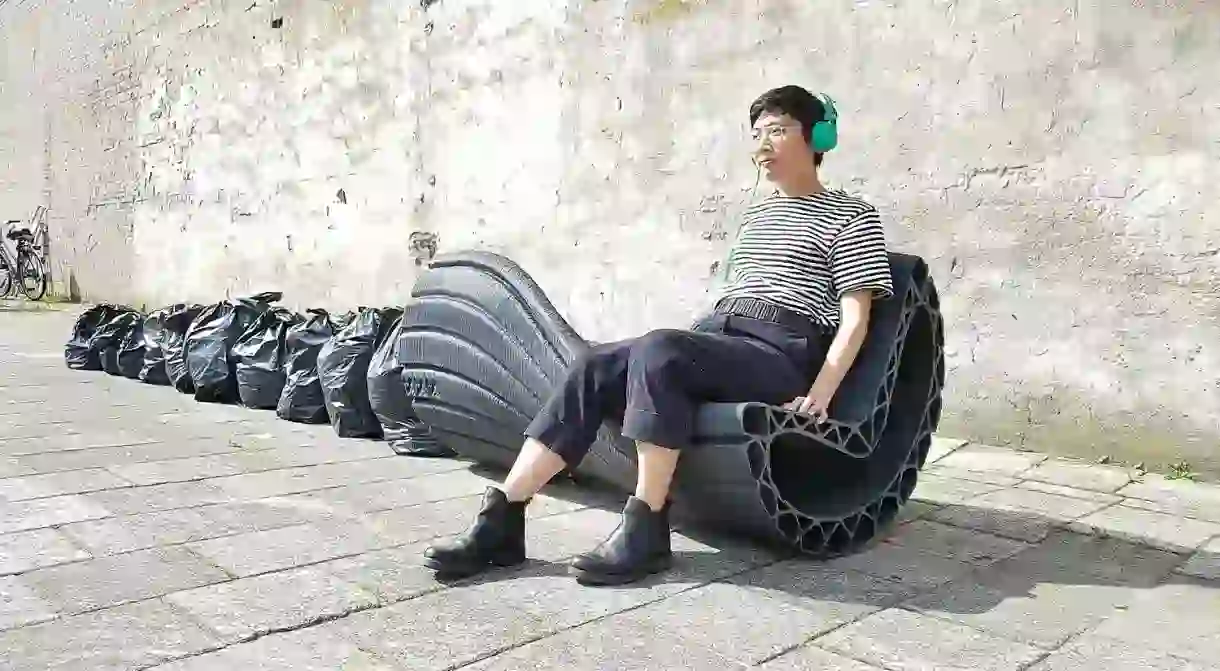'Print Your City' Transforms Plastic Waste Into Urban Furniture

A new design initiative from Amsterdam uses 3D printing technology to turn trash into furniture for public spaces.

Three years ago, Rotterdam-based architects Panos Sakkas and Foteini Setaki founded The New Raw, a research and design studio that specializes in recycling plastic waste with the use of 3D printing. Earlier this month, they unveiled a new urban design that transforms recycled plastic waste into customizable city benches.

In collaboration with the City of Amsterdam and others, Print Your City! is an ongoing research project dedicated to turning recycled plastic pellets or flakes from municipal waste into “street furniture and equipment.” The first product from this initiative is the XXX bench, which can seat two to four people. According to their press release, the bench “takes the form of a double-sided rocking chair, designed to act as a statement on working together to close the cycle for plastic.”

The design allows for a continuous stream of additional sectional benches to be added alongside each other. The customizable, evolving design has long-term flexibility, and is meant to adapt with the city’s needs. The rocking motion of the benches, according to the designers, is so that users can find “equilibrium together,” using their collective energy to move the bench. “In this way, it invites citizens to not only participate in the material collection but also contribute to the design and customization process, to better meet the needs of a neighbourhood.”
Each bench is made up of the average plastic waste from two Amsterdammers per year (at 23kg per person). But recycled plastics aren’t limited to a new life as urban furniture; the initiative also includes a broader range of applications, including recycling bins, playgrounds, and even bus stops.

Imagine if every city took each of its residents’ plastic waste and turned in into functional, recycled products. New York City alone produces nearly 12,000 tons of waste every day, and there aren’t even landfills or incinerators located in the Big Apple. According to a 2011 New York Times article, “300 million tons of plastic is produced globally each year. Only about 10 percent of that is recycled,” with an estimated seven million tons ending up in the sea.
Rather tossing it in a landfills or in the ocean, 3D printing technology could allow for an endless stream of new products made from plastic waste—and this design initiative could pave the way for eco-friendly urban design around the world.













